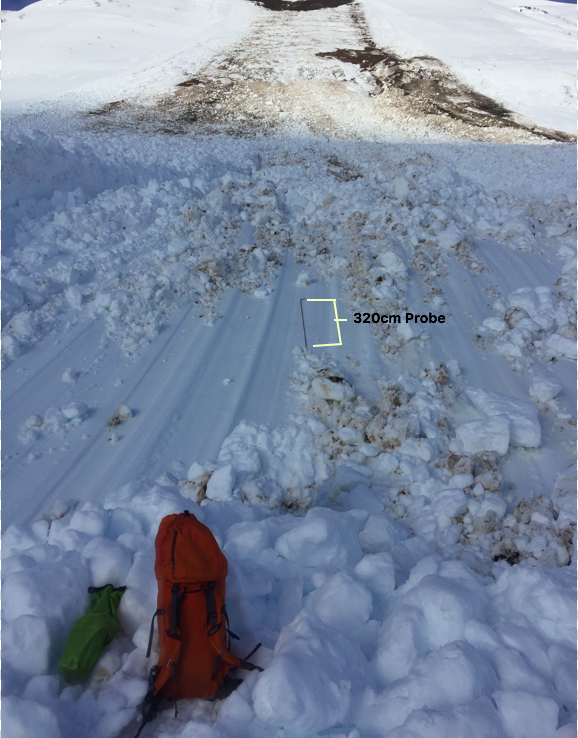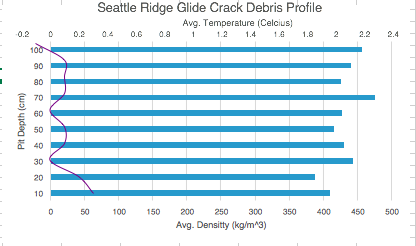| Recent Avalanches? | Yes |
| Collapsing (Whumphing)? | No |
| Cracking (Shooting cracks)? | No |
Observation: Turnagain
Location: Seattle Ridge
Glide avalanche on Seattle Ridge across from motorized parking lot. See the observation made by Wendy Wagner (PROFESSIONAL) on March 8th, 2016 (https://www.cnfaic.org/observations/seattle-ridge-1st-and-2nd-bowl-plus-weather-station-mission/).
As a research project for Alaska Pacific University, with the help of Snow Science II classmates I have been researching avalanche debris. The intention for my project is to evaluate human scent movement for Avalanche Search and Rescue Dogs (ASARD) body recovery. Carbon Dioxide (CO2) is being used as a proxy gas for human scent, which does not include CO2 but acts in a familiar manor. The methodology for this project includes establishing a control site and taking CO2 measurements at 10 cm intervals for the length of 1m. These measurements are taken in the 4 corners of a 5m x 5m x 1m plot and in the middle. Measurements are then taken in a contaminated plot that is exposed to CO2 for the duration of 1 hour, 1 meter below the middle of the plot (see photo below).
Simultaneously to these tests a Snow Science II student, Fallon Connolly, collects observational data of the avalanche debris. These observations include density profiles of 2 or more pits (1m x 1m), along with temperature profiles, average volume of debris blocks, average depth of the debris, length of debris run and perimeter of the debris and the total track of the avalanche.
RESULTS
The literature and other observations, made by professionals, provide evidence that glide avalanches are un-survivable and virtually impossible to locate a body within. Our research aims to provide further insight into these hypothesis. Specifically for the avalanche that occurred on Seattle Ridge (noted above) there was very little of a difference between the glide avalanche control and the contaminated sites (Figure.1). Compared to the wind and dry slab, glide avalanches allow for little to know vapor transport. In other words, the possibly that a human’s scent would travel from their body and through very dense glide debris (average density ~440 kg/m3) is little to none (see figure below).
As proven by the literature and these tests, glide avalanches do not allow for vapor transport enough for valuable detection and prove to be sufficiently dense. As a final note, glide avalanches are serious business and not to be taken lightly. Through safe travel practices and mitigation, these avalanches can be easily avoidable. Keep an eye out for the brown frowns!
Recent avalanches, snow loading, recent storms, continuation of glide releases on all aspects.
Low visibility (0.5 mile horizontally and 500 feet vertically), light winds from NW, temperatures around freezing, snow accumulation S1
New wet snow (snowball making)



